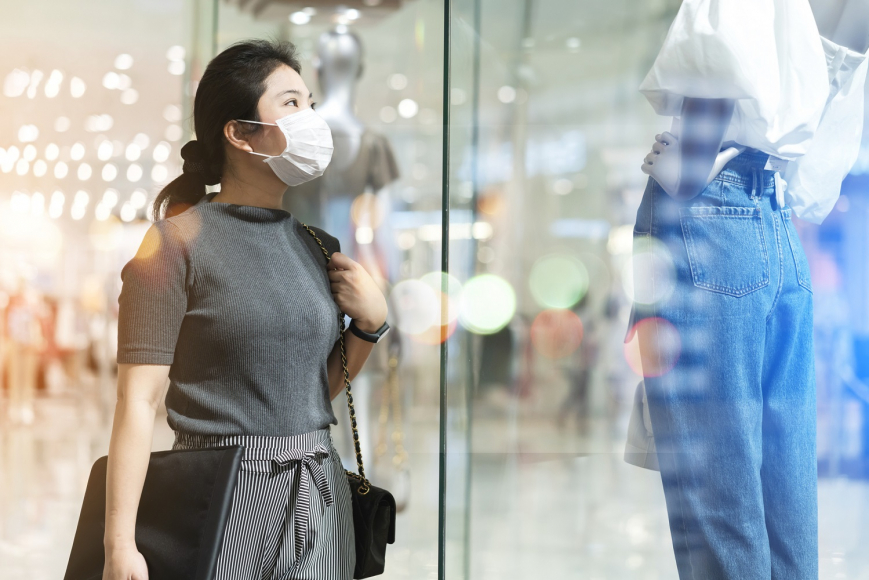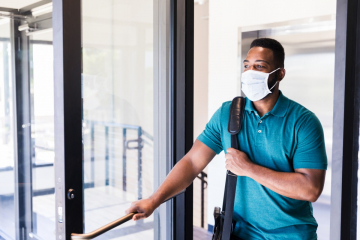Over the past year, health and safety leaders in the retail industry have had to adapt quickly, not only to keep stores running, but also to ensure they are doing so safely. We were able to gather virtually with some of these leaders during our EHSxRetail event to discuss the successes and challenges of navigating the COVID-19 pandemic in the retail industry.
“Navigating the pandemic is like changing the tires on a moving car,” said one of the retail Health and Safety Managers that attended the event. Many retailers found themselves getting creative with business models. Grocery stores implemented in-store safety measures to keep their doors open while other retailers shifted to filling online orders in-store to relieve stress on distribution centers. Even though they were faced with all these challenges, retailers found ways to operate safely and stay true to their brands.
During our event, we covered a range of topics from shifting from partial to full reopening, managing various COVID-19 guidelines, and how to approach vaccines and testing for a safe return-to-work. Here is an overview of some of the main topics that were on the minds of these retail leaders.
Opening Brick and Mortar
It’s been tough but the industry has never been more agile and health and safety focused. Adjusting between full closure to partial or full store re-opening has been a constant challenge. Throughout the pandemic, many retail stores have found themselves trying to make the shift towards reopening only to find themselves reclosing as COVID-19 cases surge. In order to safely return to fully open stores, EHS leaders are monitoring several key factors that help guide decision making and planning. Some of those factors include:
- Social distancing and local occupancy restrictions: Depending on the store location, local guidelines will differ for the allowable occupancy of a building which can dictate how many customers and employees can be in a store. Similarly, with social distancing guidelines, stores are limited on how many people can safely fit in the store while complying with local guidelines.
- Key COVID-19 data points in the community: From active cases to hospital capacity to positive test rates, EHS professionals have to stay up-to-date on the changing COVID data in the communities where their stores operate.
- Customer and employee perceptions: One of the most important factors in deciding to reopen is how safe the employees and customers feel. Ensuring everyone feels safe and secure throughout the process has a major impact on the success of reopening.
Enforcing COVID-19 Protocols
In order to stay compliant with COVID-19 guidelines, EHS leaders find themselves monitoring not only local regulations, but a staggering range of different global regulations and surges in COVID cases. To ensure compliance across the US, many EHS professionals are using the CDC guidelines as a baseline and supplementing with stricter local and state requirements. A layer of complexity is added with global locations. With all the different guidelines and standards, creating a clear and concise way to enforce COVID-19 store policies has been paramount. EHSxRetail peers discussed the effectiveness of implementing training to help empower store employees to enforce these policies. This training includes de-escalation tactics to help ease conflict when customers don’t agree with COVID-19 store policies.
One topic that will continue to evolve is the use of a COVID-19 officer in offices. This person will act as the point of contact for COVID-19 related issues and help to clearly and effectively communicate COVID guidelines. However, with the uncertainties surrounding the pandemic, others are unsure whether this position is a worthwhile investment.
Testing and Vaccines
Lastly, EHSxRetail members discussed the hot topic of vaccine and testing mandates in relation to return-to-work plans. Many retailers are still navigating this issue but currently are not requiring vaccines. Testing and vaccines are encouraged and will continue to be as employers plan a safe return to work strategy. Some companies are shifting to a more permanent work from home setup for corporate employees, allowing for more flexibility in testing and vaccines. As for frontline retail employees, safety measures such as health screenings, mask requirements, and temperature checks will continue to be a part of daily practices.
One of the challenges in returning to work will be managing employee sentiment. While some are eager to get back to work, others don’t feel safe yet. Not to mention, frontline and warehouse employees who haven’t had the option to work remotely may feel resentment towards those who have been working from home during the pandemic. EHS leaders will be responsible for easing this transition and ensuring all employees feel safe and satisfied in their work environment.
During the past year, EHS professionals have felt the demands increasing as the COVID-19 pandemic continues to evolve. While some feel that in 2020 their corporate sustainability goals have taken a backseat to the pandemic response, EHS professionals are eager to shift the focus back. Overall, EHSxRetail members feel that even though the outlook is still uncertain, they are prepared to continue growing and adapting to ensure a safe and smooth reopening and return-to-work.
Learn more about how Antea Group can provide pandemic planning and return-to-work support.
EHSxRetail was formed in order to provide participants with the unique opportunity to identify industry best practices, network with peers in an open atmosphere, and work to raise the profile of EHS in retail settings.
Learn More About EHSxRetailWant more news and insights like this?
Sign up for our monthly e-newsletter, The New Leaf. Our goal is to keep you updated, educated, and even a bit entertained as it relates to all things EHS and sustainability.
Get e-NewsletterHave any questions?
Contact us to discuss your environment, health, safety, and sustainability needs today.




